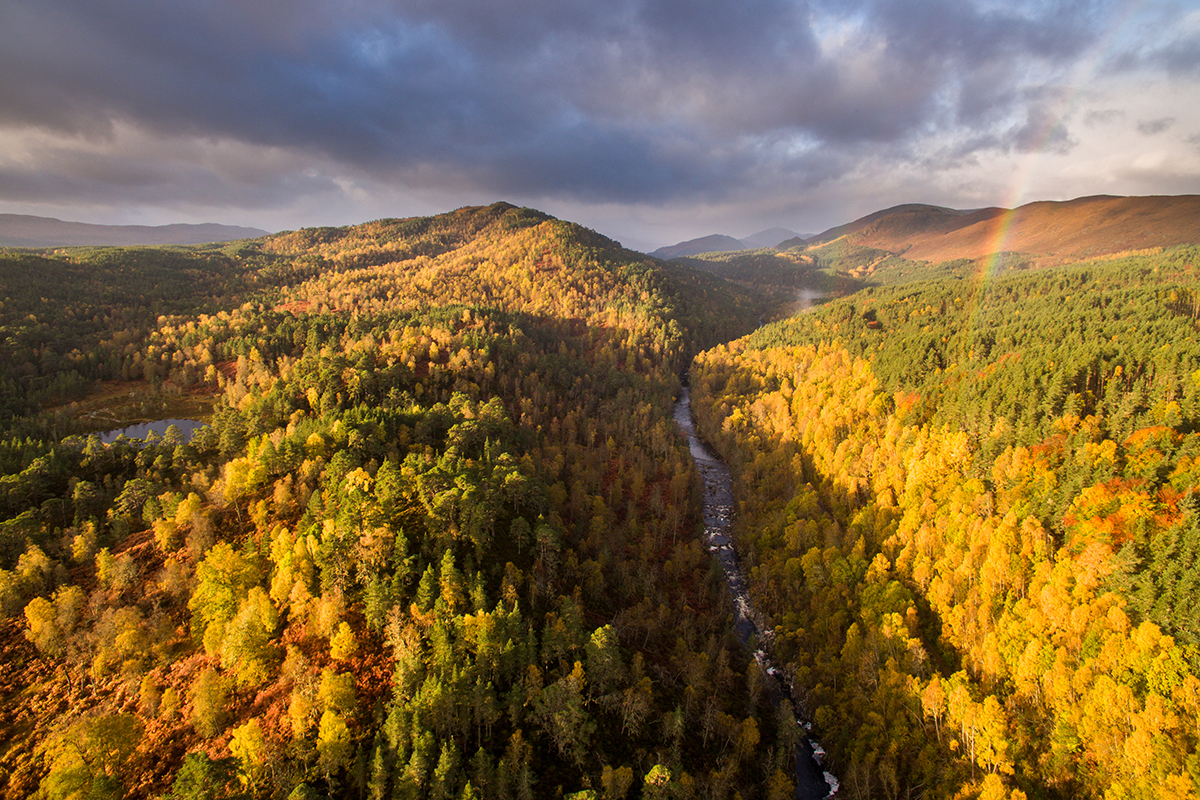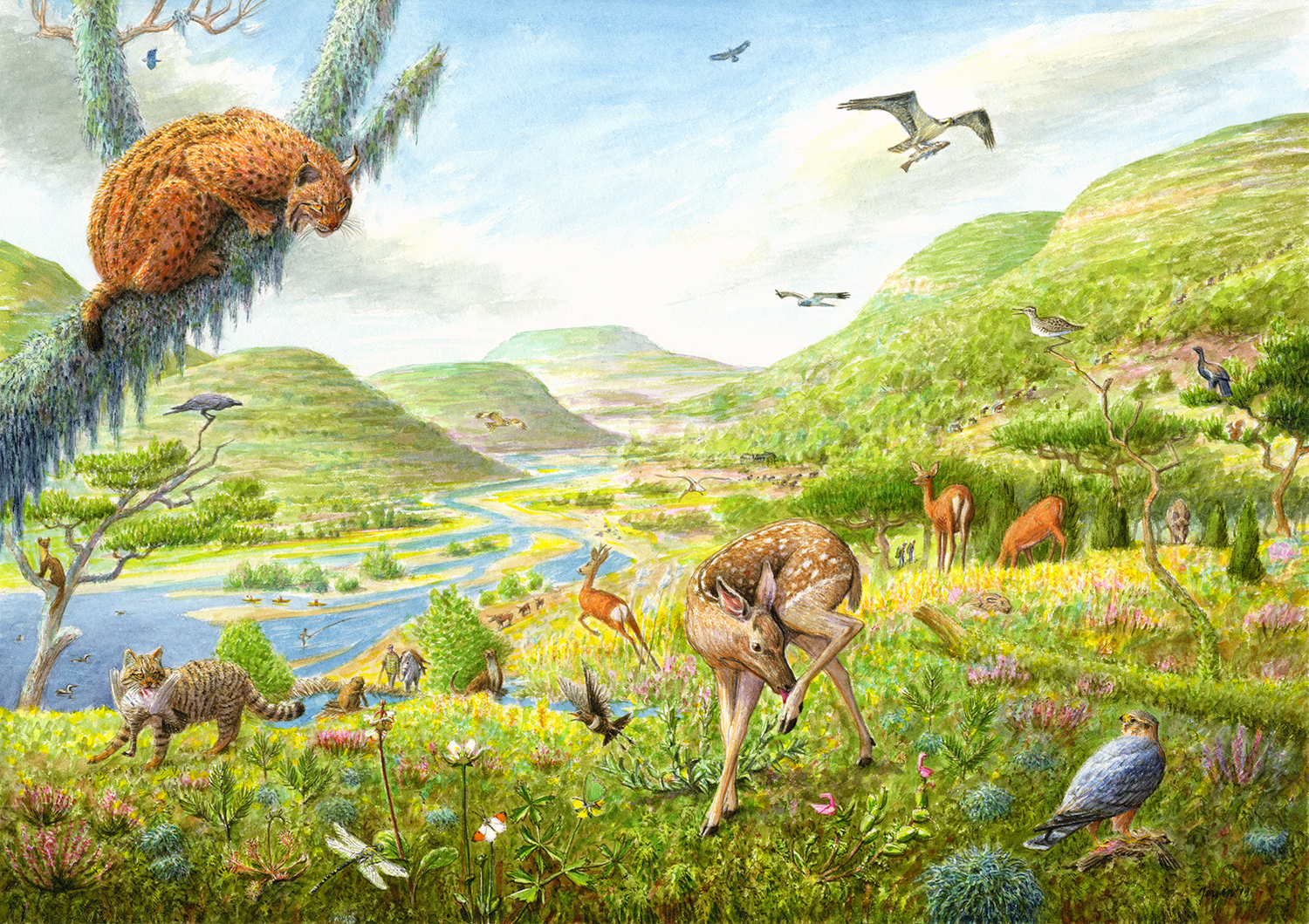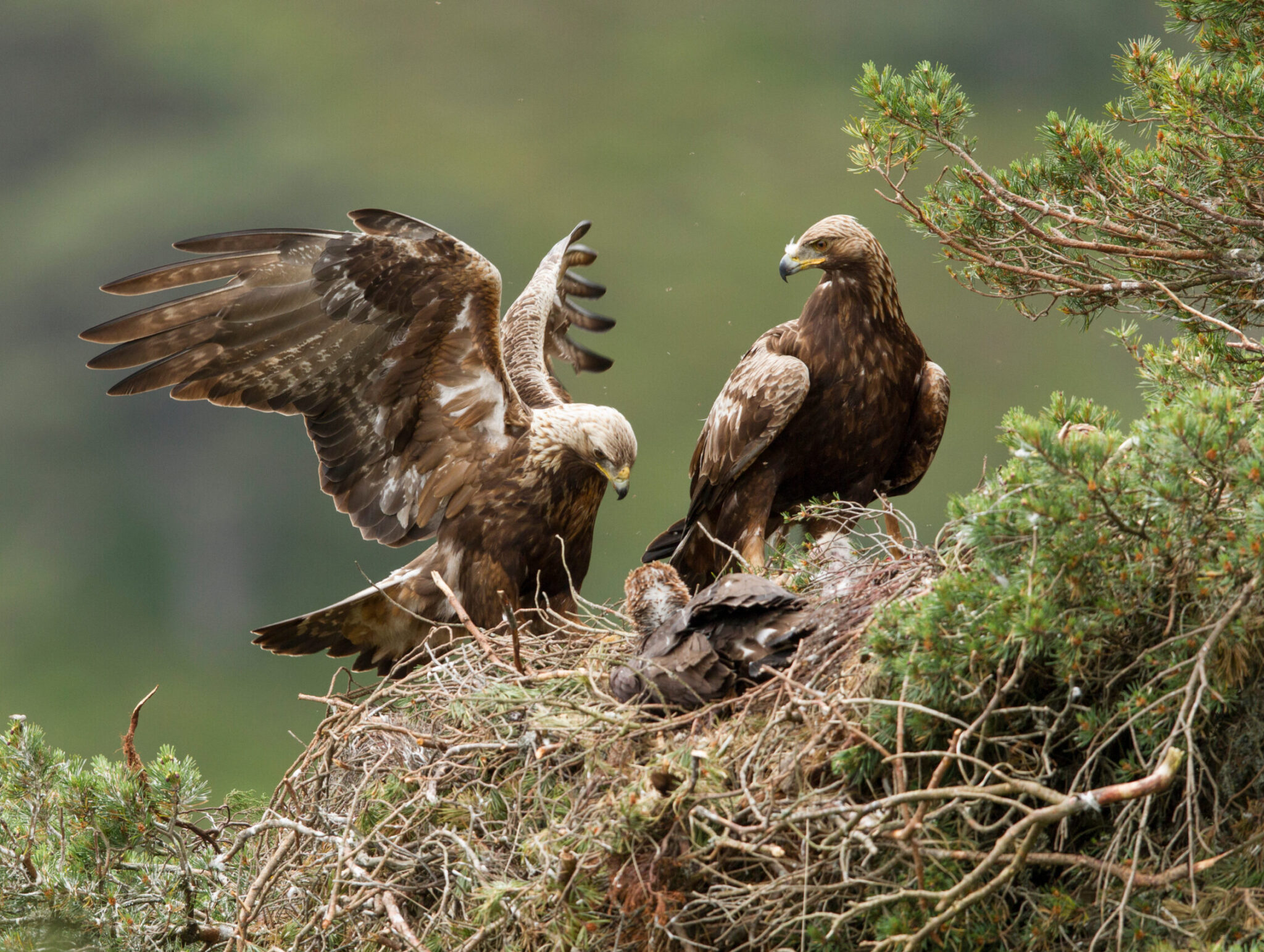Rewilding Vision
Natural processes are unfolding at scale, reconnecting fragmented habitats and creating vital corridors for wildlife to move freely throughout the landscape. With grazing pressure from deer significantly reduced, woodlands are regenerating naturally over large areas. This resurgence of vegetation is attracting a growing abundance of pollinators and songbirds, enriching the ecosystem’s diversity.
Rewetted peatlands are transforming into rich habitats for invertebrates and rare plant species, while capturing vast amounts of carbon. As natural processes take the lead, a more dynamic and resilient landscape is beginning to take shape, offering renewed promise for both nature and people. The resurgence of nature is not only reinforcing traditional land-based livelihoods but also opening up new economic opportunities. A thriving local economy, grounded in nature and deeply connected to Highland culture and tradition, is firmly rooted within the community.
Communities with strong ties to the surrounding landscape and its wildlife are playing a leading role in shaping the region’s future. As interest in nature-based approaches grows, people are applying and expanding their skills, while Affric Highlands is becoming a hub for sustainably sourced natural materials that support local enterprises. Carbon capture now offers a viable income stream for landowners, with a share of the revenue reinvested into local communities — creating fresh momentum and incentives for further nature restoration.
Rivers are becoming increasingly wooded, with overhanging branches offering vital shade for species like salmon, while fallen debris enriches the water with nutrients. Reintroduced meanders are helping to slow the flow, allowing rivers to shape diverse riparian habitats. Beavers, now a more frequent presence, are playing a key role — their dam-building and tree-felling activities help retain water upstream and reduce the severity of downstream flooding.
Deeper, cooler pools are forming, offering crucial refuge for juvenile fish and maintaining water availability through the dry summer months. Waterlogged woodlands are accelerating natural decay processes, creating essential nesting cavities for a wide range of bird species. The largest beaver dams are blending seamlessly into the landscape, doubling as crossing points for other mammals. Meanwhile, the woody debris they introduce into rivers helps trap harmful sediments, enhancing overall water quality.


